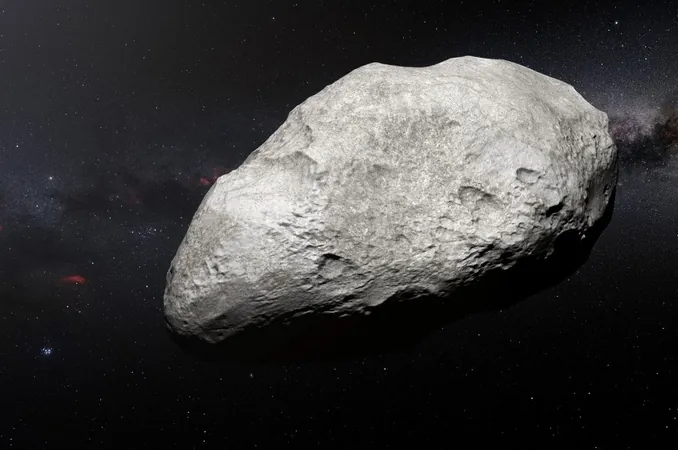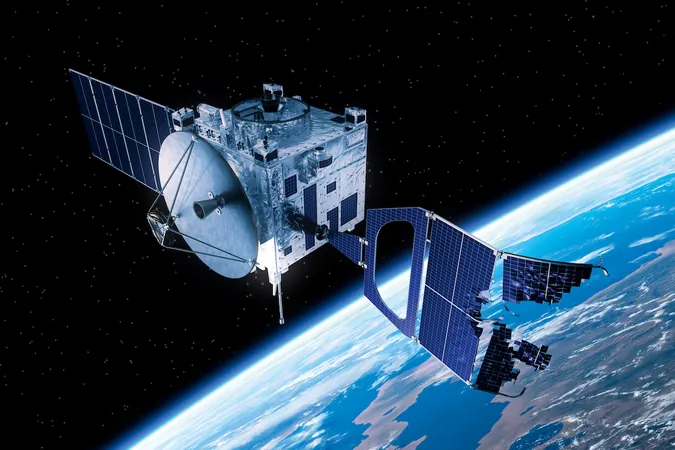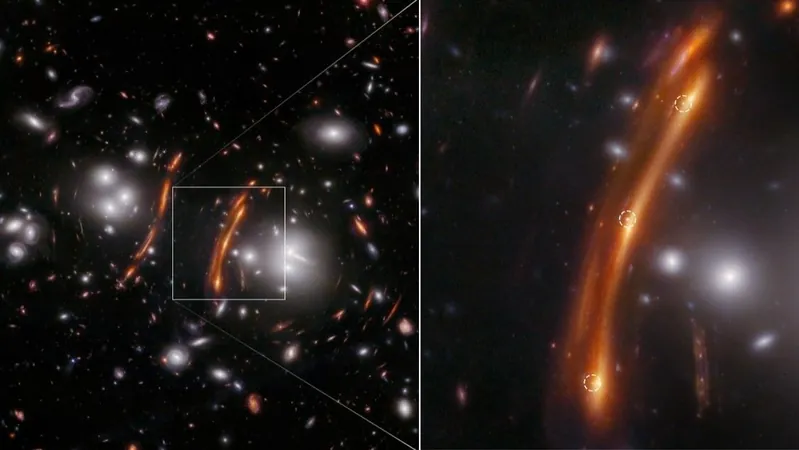
Hera Spacecraft Set to Investigate Asteroid Redirected by DART in a Pioneering Mission
2024-10-04
Author: Rajesh
Introduction
In a dramatic leap forward for planetary defense, the European Space Agency (ESA) is preparing to launch its Hera spacecraft to conduct an in-depth investigation of the asteroid Dimorphos. This moonlet, which measures just a few hundred meters across, was famously struck by the Double Asteroid Redirection Test (DART) spacecraft in September 2022, about 11 million kilometers (6.8 million miles) from Earth. The mission, part of a groundbreaking experiment, demonstrated for the first time that humanity could successfully deflect an asteroid's trajectory—a concept that once seemed purely fictional.
The DART Impact and Its Significance
The DART spacecraft, roughly the size of a refrigerator, successfully altered Dimorphos's orbit around its larger companion asteroid, Didymos, by 33 minutes following the impact. This result confirmed the effectiveness of kinetic impactor techniques for asteroid deflection, a critical capability in safeguarding Earth from potential asteroid threats. Despite this success, significant mysteries remain: What was Dimorphos like before the collision? What were the precise effects of the impact?
Hera Mission Overview
To answer these questions, ESA's Hera mission is poised for launch on a SpaceX Falcon 9 rocket from Cape Canaveral, Florida, potentially as early as this week, provided all systems are go following a recent anomaly that affected another SpaceX mission. The Hera spacecraft is equipped with a robust suite of 12 scientific instruments and two nanosatellites to gather comprehensive data on the asteroid's composition and the effects of the DART impact.
Composition and Characteristics of Dimorphos
One of the most intriguing aspects of Dimorphos is its composition; early analysis suggests it may be a loose conglomerate of rubble held together by gravitational forces. This raises fascinating questions about the nature of such small celestial bodies, as conventional models may not apply. "The behavior of these low-gravity objects defies intuition," explains Patrick Michel, Hera's principal investigator.
Journey and Scientific Goals of Hera
Hera's journey will take it past Mars before it arrives at Dimorphos in December 2026, kicking off a six-month scientific campaign that will not only investigate the impact site but also assess the crater formed by DART, if one formed at all. The mission's two nanosatellites, Juventas and Milani, will play crucial roles: Juventas aims to land on Dimorphos, a first for such a small asteroid, while Milani will orbit and gather data from a distance.
The Importance of Planetary Defense
Understanding the dynamics of Dimorphos and similar asteroids is more than an academic pursuit; it is part of humanity’s broader effort to develop effective strategies for planetary defense against potentially catastrophic impacts. While larger asteroids—those over a kilometer in diameter—are currently accounted for and deemed unlikely to pose a threat within the next century, many smaller asteroids remain unidentified. Research suggests only 40% of asteroids around 140 meters across—capable of devastating a city—have been detected.
Conclusion
As we await the maiden voyage of Hera, this mission not only signifies a monumental leap in our capabilities but also serves as a reminder of the ever-present cosmic dangers lurking in our solar system. With the Hera mission, we stand on the brink of a new era in planetary defense, armed with the knowledge and tools necessary to protect our home from the vast and unpredictable cosmos. Stay tuned as we follow this trailblazing mission that could one day save our planet!





 Brasil (PT)
Brasil (PT)
 Canada (EN)
Canada (EN)
 Chile (ES)
Chile (ES)
 España (ES)
España (ES)
 France (FR)
France (FR)
 Hong Kong (EN)
Hong Kong (EN)
 Italia (IT)
Italia (IT)
 日本 (JA)
日本 (JA)
 Magyarország (HU)
Magyarország (HU)
 Norge (NO)
Norge (NO)
 Polska (PL)
Polska (PL)
 Schweiz (DE)
Schweiz (DE)
 Singapore (EN)
Singapore (EN)
 Sverige (SV)
Sverige (SV)
 Suomi (FI)
Suomi (FI)
 Türkiye (TR)
Türkiye (TR)